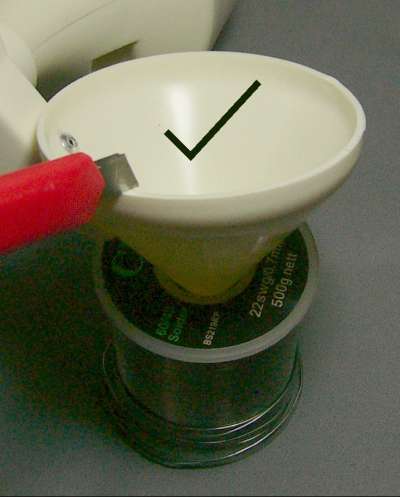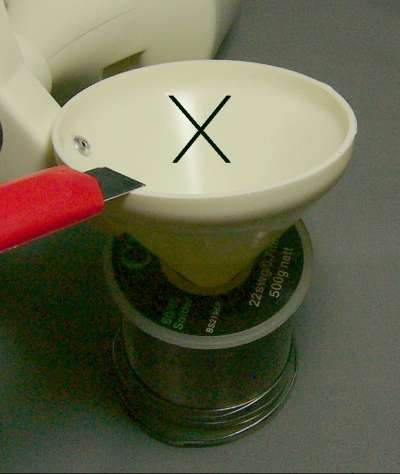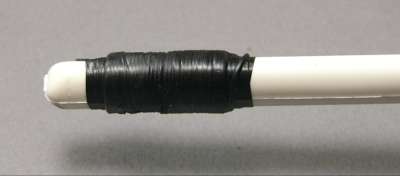The 1-Wire Weather (OWW) wind instrument
Tim Bitson's book "Weather Toys" has some excellent advice about building the wind sensor kit, but after reading the section about balancing the cups and vane I came up with alternative methods. I'm not suggesting my methods are better, just different.
For the cups I decided to remove weight from the heaviest cup, rather than add weight to the lightest. My reasoning being that in the extremes of the British weather - heat, cold, rain, ice and wind - the metal tape suggested by Tim might eventually fall off.
I used a craft knife to scrape some plastic of the rim of the heavy cup, a little at a time. This is using the craft knife with the blade at right angles to the surface. Don't be tempted to cut with the blade almost parallel to the surface. You are more likely to slip and cut too deep, break the blade or cut yourself. In total I needed to scrape about 0.5mm (0.02 inches) from the rim, all the way round, before it was nicely balanced.


Now to the vane. As predicted by Tim, it was a long way out of balance. Again, I wasn't keen on using metal tape for the reasons given above. Instead I wrapped some 22swg solder round the shaft. It needed about 48 inches! I then removed a couple of turns and taped the solder in place with self amalgamating tape.


Balanced

My other modification involves the use of M5 (almost identical thread to 10/32) nyloc nuts to hold the vane and cups in place. The kit comes with nyloc nuts for the casework, so I don't know why they they supply ordinary nuts for fastening the cups and vane.
Looking at the kit of parts, the pictures in the book and in the PDF on the Hobby-Boards site there is reference to end caps for the square tubing. After being unable to find them, Eric (Hobby-Boards) advised me that they are no longer supplied. I was very fortunate to find a couple left over from an old project. If I had not found these I had a plan to use a hot melt glue gun to make some, but I don't know how successful this would have been.
I also considered using hot melt glue to seal the joins in the casework until I found a local firm supplying (90ml) small tubes of clear silicone sealant (Dow Corning 732).
If you want the proper end caps I have found a website in the UK that lists them - http://www.rosshandling.co.uk/tube-inserts-2.asp
As they appear to be manufacturers I suspect they normally deal in thousands, but it might be worth contacting them to see if they will supply a couple of "samples".
Hopefully theses tips are of use to someone new to the hobby.





